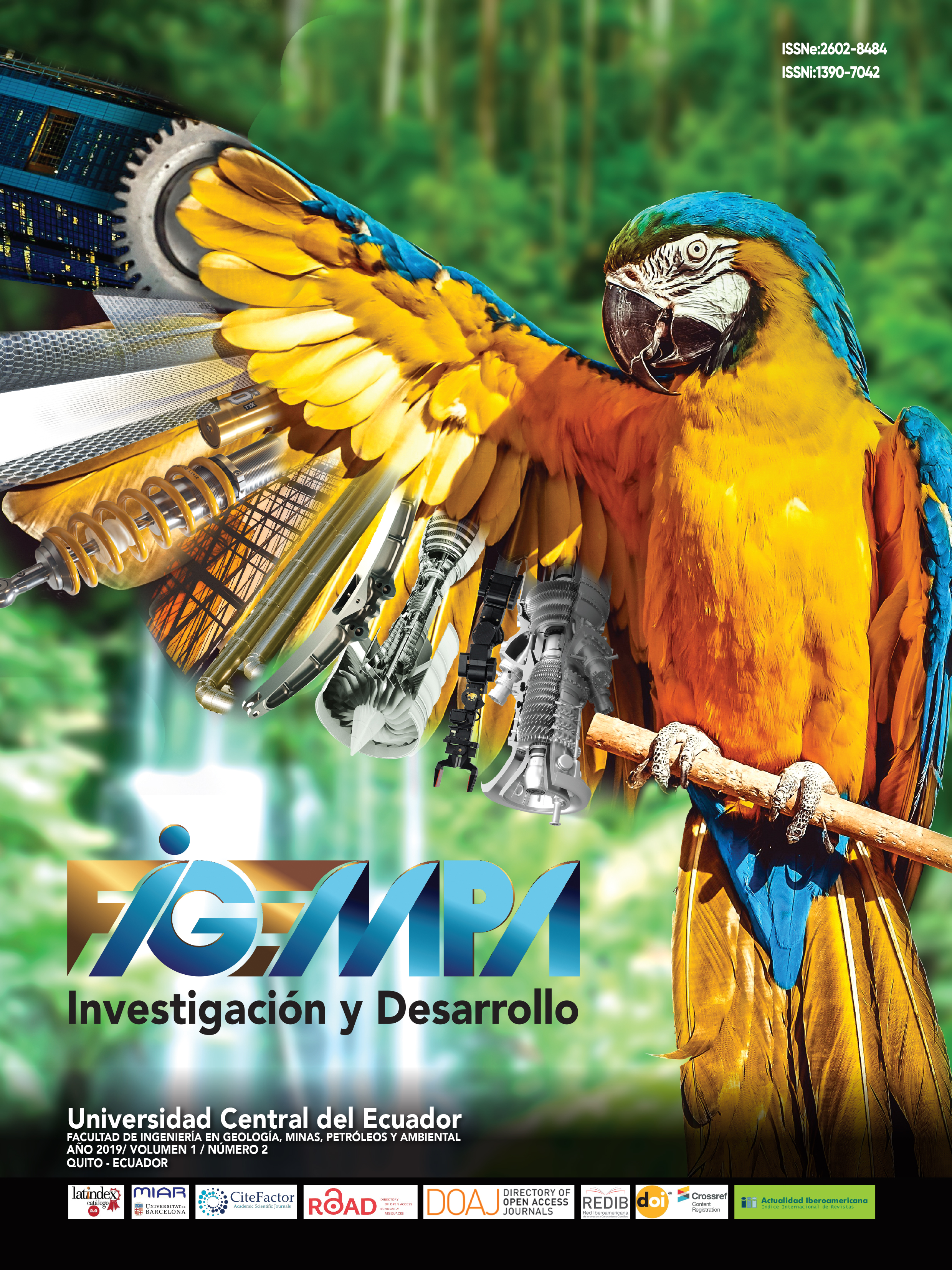Análisis químico y de peligrosidad de lodos del sistema de tratamiento de aguas residuales en la industria de palma
Contenido principal del artículo
Resumen
El presente estudio analizó los componentes químicos y biológicos de los lodos generados en el sistema de tratamiento de aguas residuales industriales en una extractora de aceite crudo de palma, determinando la peligrosidad e identificando el destino final del mismo, en dos zonas, la laguna de oxidación N°4 y en el geotubo. Además, se estableció si el floculante utilizado en el paso del lodo de la laguna hacia el geotubo incide en sus características químicas. Para esto, se realizaron tres muestreos en tres diferentes días y meses. Para la laguna de oxidación N°4 se recolectaron tres submuestras en diferentes puntos para formar una muestra compuesta, y en el geotubo se tomaron muestras a 0,5 y 2 m de profundidad. Analizando parámetros agrícolas como NPK, se obtuvieron niveles altos de concentración de nitrógeno y fósforo, comparados con guías de fertilización, y niveles adecuados para el potasio, lo que indica que se puede emplear para uso agrícola, la relación NPK resultante es de 3:3:1. La corrosividad en base al pH del lodo, está dentro del rango “no corrosivo” según la normativa. La reactividad, en base al nivel de cianuros se estableció como despreciable. La toxicidad por metales pesados, en cuanto a níquel, cromo, plomo y cadmio, resultaron bajo los niveles permisibles. La inflamabilidad de lodos, cualitativamente, se determinó que no registra presencia de gases inflamables. En el parámetro biológico infeccioso por concentración de coliformes totales, el resultado está bajo los límites permisibles. Finalmente, el lodo tanto de laguna como del geotubo resulta ser “no peligroso” según las normativas nacionales e internacionales y sus características químicas no son alteradas por el uso del floculante indicado.
Descargas
Métricas
Detalles del artículo

Esta obra está bajo una licencia internacional Creative Commons Atribución 4.0.
Citas
ASTM Internacional HACH. (2013). Manual de análisis de agua.
Cogollo, J. (2010). Clarificación de aguas usando coagulantes polimerizados: caso del hidroxicloruro de aluminio. Revista DYNA, 78 (165), 20.
Esparza, F. (2018). Combustibles Sólidos, Líquidos y Gaseosos. BS. España, Bomberos de Navarra Nafarroako Suhiltzaileak. 27 -32. http://bomberosdenavarra.com/documentos/ficheros_documentos/indice.pdf
GRUNtek Environmental Services. (2012). Reporte de análisis. Ecuador, GRUNtek Environmental Services.
HACH. (2000). Manual de análisis de agua. EE.UU.: HACH COMPANY. [En línea]. https://www.hach.com/asset-get.download.jsa?id=7639984469. Revisado: 19/09/2018.
Instituto Mexicano de Tecnología del agua. (2000). Tratabilidad de los lodos producidos en la potabilización del agua en coordinación de tratamiento y calidad de Agua. México.
Ministerio del Ambiente. (2015). Anexo 2 del libro VI del texto unificado de legislación secundaria del misterio del ambiente: Normas de calidad ambiental del recurso suelo y criterios de remediación para suelos contaminados. Acuerdo Ministerial 097. [En línea]. Ecuador. http://gis.uazuay.edu.ec/ierse/links_doc_contaminantes/REGISTRO%20OFICIAL%20387%20-%20AM%20140.pdf. Revisado: 10/10/2018.
Norma Oficial Mexicana. NOM-004-SEMARNAT. (2002). Protección ambiental. Lodos y biosólidos. Especificaciones y límites máximos permisibles de contaminantes para su aprovechamiento y disposición final. Diario oficial de la Federación. [En línea]. México. http://legismex.mty.itesm.mx/normas/ecol/semarnat004.pdf. Revisado: 18/07/2018.
Norma Oficial Mexicana. NOM-052-SEMARNAT-2005. (2005). Características, procedimiento de identificación, clasificación y los listados de residuos peligrosos. Diario oficial de la Federación. [En línea]. México, disponible en: http://www.inb.unam.mx/stecnica/nom052_semarnat.pdf. Revisado: 05/07/2018.
Owen, E. (2011). Fertilización de la palma africana (Elaeis Guineensis Jacq.) en Colombia. Revista Palmas, 13 (21992), 40-49.
Paredes Calderón, Y. C., Chisaguano Quishpe, W. G. & Malacatus Cobos, P. N. (2017). Análisis de generación - características tóxicas y biológico infecciosas de lodos de la potabilizadora Los Álamos. FIGEMPA: Investigación y Desarrollo, 3(1), 61–67. https://doi.org/10.29166/revfig.v1i1.57.
Pérez, M. (2016). Tratamiento de lodos residuales procedentes de plantas de tratamiento de aguas residuales mediante procesos electroquímicos para la disminución de metales. [Tesis de ingeniería]. Ecuador, Carrera de ingeniería ambiental, Universidad Politécnica Salesiana, 150.
Secretaría de Ambiente del Municipio de Quito. (2014). Resolución Nacional 0002-SA-2014. Quito.
Soler, F. (2018). Aceite de Palma: Cultivo, Procesos de Obtención, Refinación y Transformación. LIPSA [En línea]. Ecuador: http://www.aiqs.es/uploads/managearticle/7/2018/03/16/20180316120421-0559.pdf
TENCATE Geotube. (2017). La solución de deshidratación de alto volumen y bajo costo. Soluciones de desagüe ambiental. [En línea]. Georgia. https://www.tencategeotube.com/en/solutions/environmental-dewatering
TENCATE Geotube. (2007). Textiles industriales. Sistemas de filtración. Tecnología de filtración Geotube. [En línea]. Georgia. https://es.slideshare.net/slidesharedgp/geotubostencate-secado-de-lodos
UNASAM – FCAM. (2009). Procedimiento de muestreo de agua superficial. Sistema de gestión de calidad – NTP ISO/IEC 17025.

